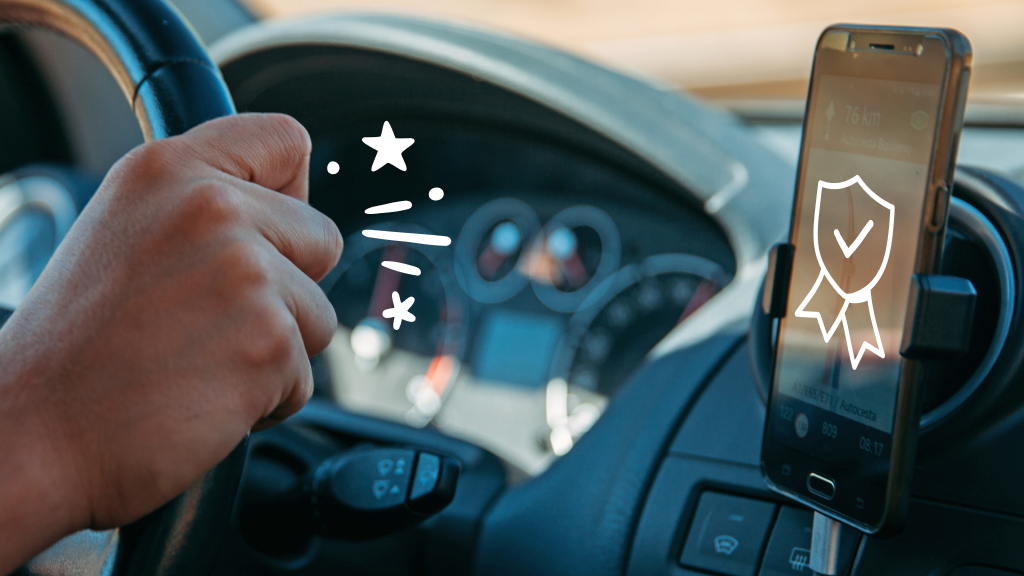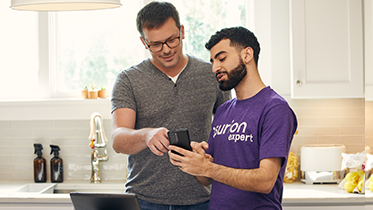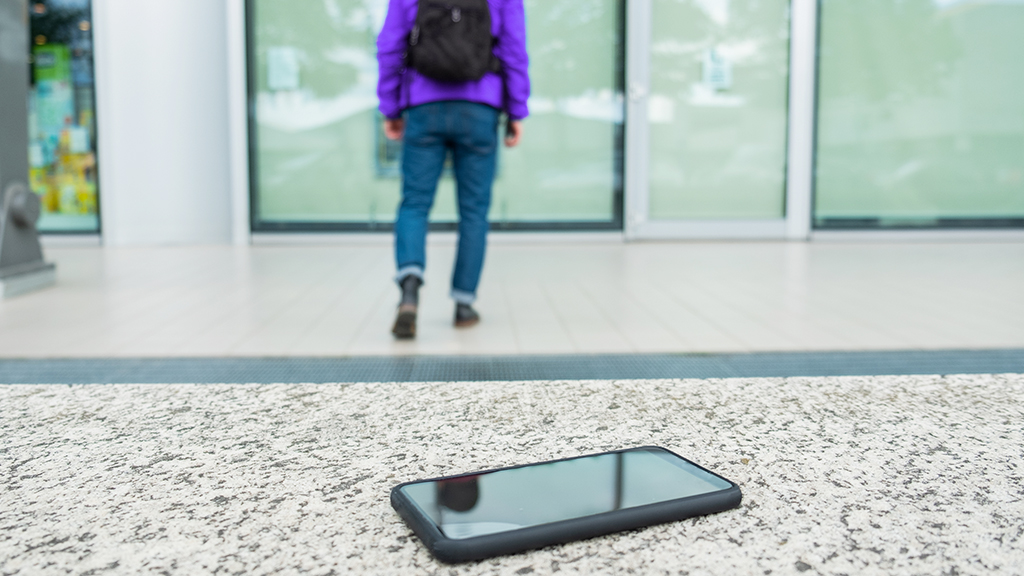Connected cars give you hands-free access to some of your favorite mobile apps—like Waze®, WhatsApp®, Google® Maps, and Spotify®—all without having to pick up your phone. But how do you enjoy the convenience of this new technology while avoiding the dangers of distracted driving?
The National Highway Traffic Safety Administration (NHTSA) defines this phenomenon as anything that takes your attention away from the road—like texting, talking, and even eating. In 2021, 3,522 people were killed by distracted driving, according to the NHTSA, and phones accounted for 12% of all these deaths, or 377 fatal crashes. “Sending or reading a text takes your eyes off the road for 5 seconds,” the NHTSA wrote. “At 55 mph, that’s like driving the length of an entire football field with your eyes closed.”
Enter safe driving mobile apps. These applications were designed to help you stay focused on the road by monitoring your phone use, speeding, hard braking, and more. They can even help you save money on car insurance. But are safe driving apps worth it? And should you be concerned about data privacy?
Here at Asurion, we don’t just fix and protect your tech, we teach millions of people how to get the most out of their connected devices—from everything you need to know about Apple CarPlay® and Android™ Auto to how to hook up car Wi-Fi. Here’s our guide to safe driving apps.
What are safe driving apps?
Safe driving apps are mobile applications that use sensors built into your phone to gather information about your driving habits, especially those that can lead to (and prevent) accidents. With this data, the app lets insurance companies monitor your driving and adjust your rate based on how safe you are behind the wheel. These apps also come with a dashboard that tells you how you’re driving so you can make adjustments as needed.
Benefits of safe driving apps
Safe driving apps can help you drive safe—and save. Think of them as the financial motivation you need to drive more carefully. These apps may also help you—and your teenage children—abide by distracted driving laws, which are on the books in many states, prohibiting texting and talking on a cell phone while driving. The Ohio distracted driving law, for instance, makes it illegal to use a cell phone or electronic device—or hold one in your hand or lap—while driving on roads across the state. Making and receiving calls with a hands-free device, however, is legal for drivers over 18.
Are there drawbacks to safe driving apps?
Just like social media apps, smartphones, and connected vehicles, safe driving apps collect information about you, so your insurer will know your location and other details about you and your driving. This kind of monitoring is common in the digital age. But if you’re concerned about data privacy issues, contact your insurance company to find out if safe driving apps are right for you.
To learn more about protected data and privacy, check out our guides to staying safe online, securing your phone from hackers, backing up your digital life, and protecting your personal data when you stay at an Airbnb®.
How much can you save with safe driving apps?
How much you save with the safe driver discount depends on your insurance company, your driving history, and other factors. But generally, many apps offer a 10% auto insurance discount when you enroll and up to 25% off your auto insurance premium based on your good driver discount.
What do safe driving apps and devices track?
Safe driving apps gather a variety of details about you and your safe driving behaviors and poor driving habits, including:
- Where you drive.
- Your actual mileage.
- The times of day you drive.
- How often you use your car and for how long.
- How you accelerate and brake.
- How fast you drive and whether you're speeding.
- If you take sharp or quick turns.
- How you make phone calls—hand-held versus hands-free—and whether you pick up your phone for browsing or texting.
Keep in mind, not all insurers collect the same information, and every safe driving app has its approach and program. Check the app’s website or contact an agent for details.
Safe driving apps to consider
Most established insurance companies have programs that reward you for safe driving habits. They may vary in how they use data to determine insurance rates and discounts, so do some research before choosing one. Here are some popular safe driving apps to consider:
- American Family®: KnowYourDrive®
- Farmers®: Signal®
- Geico®: DriveEasy
- Liberty Mutual®: RightTrack®
- Nationwide®: SmartRide®
- Progressive®: Snapshot®
- State Farm®: Drive Safe & Save™
- Travelers®: IntelliDrive®
- USAA®: USAA SafePilot®
Contact your insurance provider for more information.
Safety apps for parents of teens
There’s another category of safe driving app that lets parents monitor their teenager’s driving skills, helping teens to stay focused on the road and avoid poor driving habits. Popular teen driving apps include Life360, SAFE 2 SAVE, and Safest Driver™.
Since these apps aren’t linked to car insurance providers, they may not help you save as much money (though fewer accidents could mean lower premiums). But they may help you and your kids learn how to stop texting and driving and become safer drivers.
Can you cancel your safe driving app?
Yes, you can. Contact your insurance provider for more information.




